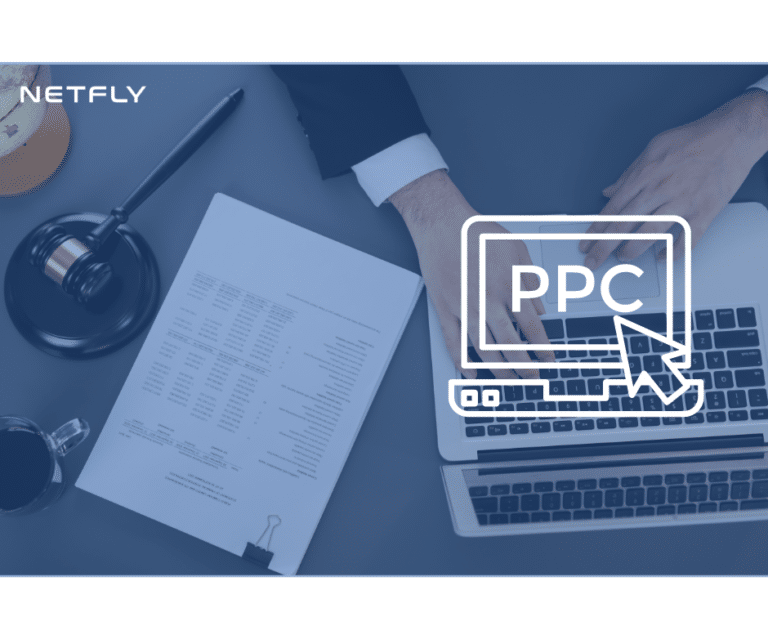To turn your law firm’s website into a client-generating powerhouse, start by evaluating its current performance—consider page load times, bounce rates, and user engagement insights. You’ll want to optimize the site for mobile users and improve navigation to guarantee potential clients can effortlessly find what they’re looking for. Implement targeted SEO strategies by researching specific keywords that align with your legal expertise and insert these strategically throughout your content. Additionally, create high-quality, engaging content that addresses common client concerns and showcases your expertise. Don’t forget to include effective call-to-action buttons that prompt users to connect or learn more, thereby potentially increasing conversion rates. Further steps will reveal additional strategies to enhance your digital presence.
Key Takeaways
- Optimize website performance by improving page load times and reducing bounce rates for enhanced user engagement.
- Ensure mobile responsiveness and readability across all devices to cater to a wider audience.
- Implement strategic SEO practices, including keyword optimization and clean URLs, to boost visibility and attract qualified leads.
- Develop and regularly update high-quality content relevant to your legal expertise to engage and inform potential clients.
- Use persuasive, well-placed call-to-action buttons to guide visitors towards engaging with your firm effectively.
Evaluate Current Website Performance
Before you can transform your law firm’s website into a client-attracting powerhouse, it is crucial to evaluate its current performance. It is vital to begin by delving into the data that reveals the true story behind how your website is operating. Examine metrics such as page load times, bounce rates, and session durations to gain a solid understanding of user engagement. These figures are more than mere numbers; they unveil the strengths and weaknesses of your site, directing your next strategic moves.
Moreover, do not underestimate the influence of user feedback. This direct input from your site visitors and clients offers priceless insights into their experiences and expectations. Are they effortlessly accessing the information they require? What are their challenges? Incorporating this feedback into your analysis will provide you with a comprehensive view of your website’s effectiveness.
Optimize for Enhanced User Experience
Having reviewed your current website’s performance, you’re ready to take the next step: optimizing for an enhanced user experience. An essential component in this optimization process is ensuring your site’s mobile responsiveness. Today, more than half of internet traffic comes from mobile devices, and potential clients are likely to first encounter your law firm through their smartphones or tablets. If your site isn’t optimized for these devices, you’re potentially turning away a significant number of prospects.
To achieve mobile responsiveness, you need to have a flexible layout that adjusts seamlessly to different screen sizes and orientations. Text readability and quick loading times are vital, ensuring that users won’t leave your site out of frustration.
Another key area to focus on is navigation simplicity. Your site should allow visitors to find the information they need without confusion or delay. This means having a clear, well-structured menu, using intuitive labels, and minimizing the number of clicks needed to reach important content like your contact information or service descriptions. Simplifying your site’s navigation not only enhances the user experience but also supports your potential clients in their time of need, guiding them smoothly towards engaging your services.
Implement Targeted SEO Practices
To enhance your law firm’s visibility online, it’s vital to implement targeted SEO practices. Begin with thorough keyword research. Identify terms your potential clients are searching for, but also consider less competitive keywords that are specific to the legal services you offer. This approach guarantees you’re not just attracting traffic, but the right kind of traffic—potential clients who are looking for the exact services you provide.
Next, focus on on-page optimization. This involves strategically placing your chosen keywords in critical parts of your website, such as titles, headers, and meta descriptions. It’s essential that these elements are not only optimized for search engines but also appealing to potential clients. Remember, while keywords help you rank, compelling and clear content retains the visitor’s interest.
Make sure your URLs are clean and descriptive, and that each page’s content aligns with specific keywords. This precision not only boosts your SEO but also improves user experience by making information easy to find. Utilize alt text for images, ensuring they too contribute to your site’s SEO strategy. By integrating these targeted SEO practices, you establish a solid foundation for attracting more qualified leads to your law firm’s website.
Develop High-Quality Content
Developing high-quality content is vital for maintaining your law firm’s website engaging and informative. Crafting a content strategy that resonates with your target audience not only establishes you as an authority in your field but also greatly boosts your engagement metrics. You’ll want to focus on topics that reflect your expertise in specific legal areas, offering insights that aren’t readily available elsewhere.
Consider the questions and concerns that potential clients frequently raise during consultations and address these directly in your content. This targeted approach ensures that your articles, blogs, and case studies are not only relevant but also highly valuable to those seeking legal advice. Remember, it’s not just about quantity; the quality of your content is essential in building trust and credibility.
To further enhance the impact of your content, integrate current legal trends and case law to keep your material fresh and timely. This showcases your firm’s commitment to staying ahead in a competitive market. With a consistent output of high-quality content, you’ll see an improvement in your website’s traffic and user engagement, establishing your site as a go-to resource for legal information.
Utilize Effective Call-to-Action Buttons
Effective call-to-action (CTA) buttons are crucial for converting website visitors into potential clients. Your law firm’s website needs strategically placed and well-designed CTAs to guide users towards engaging with your services. It’s not just about having them; it’s about making them function effectively.
Here are key strategies to optimize your CTA buttons:
- Strategic Placement: Position your buttons where they’re most likely to be noticed without interrupting the user’s natural browsing flow. Common areas include below key content sections or at the end of informational pages.
- Design Optimization: Guarantee your buttons stand out with a design that contrasts yet complements your site’s overall aesthetic. Utilize bold colors and legible fonts.
- Compelling Text: Use action-oriented, persuasive text that creates a sense of urgency or benefit. Phrases like “Schedule Your Free Consultation Now” or “Download Our Legal Guide Today” can be impactful.
- Size and Shape: Ensure your buttons are large enough to be easily clickable, but not so large that they dominate the screen. Round edges are generally more appealing and modern.
- Testing and Feedback: Regularly test different versions of your buttons to see which ones perform best. Use A/B testing and monitor click-through rates to refine their effectiveness.
Frequently Asked Questions
What Is the Ideal Load Time for a Law Firm’s Website?
Your law firm’s website should load in 2-3 seconds. Optimize images and streamline content strategy to enhance user experience and improve conversion rates, making your site efficient and more appealing to prospective clients.
How Often Should We Update Our Website’s Design?
You should refresh your website’s design every 2-3 years to maintain design consistency and enhance user experience, ensuring you stay current with trends and meet visitor expectations in a professional, strategic manner.
What Are the Best Hosting Options for Legal Websites?
You’re exploring hosting options for your legal website. Prioritize security measures and user experience to guarantee reliability and professionalism. Choose hosts that offer robust protection and seamless, strategic user interfaces for peak performance.
Is It Necessary to Have a Mobile App for Our Law Firm?
It’s not strictly necessary to have a mobile app, but focusing on mobile optimization and user experience through app development can enhance client retention and make your services more accessible to potential clients.
What Legal Disclaimers Should Our Website Include?
You’ll need to include a clear privacy policy and terms of use on your website. These disclaimers protect both your firm and your clients by outlining rights and responsibilities clearly and professionally.
Conclusion
Now that you’ve enhanced your law firm’s website, you’re poised to see substantial growth. Remember, firms with optimized websites generate 55% more client engagement. Keep refining user experience, honing your SEO, and crafting impactful content. Don’t forget, effective call-to-action buttons are pivotal—they convert visitors into clients. Stay proactive and update your strategies regularly to maintain your competitive edge. Here’s to transforming your website into a client-generating powerhouse!










